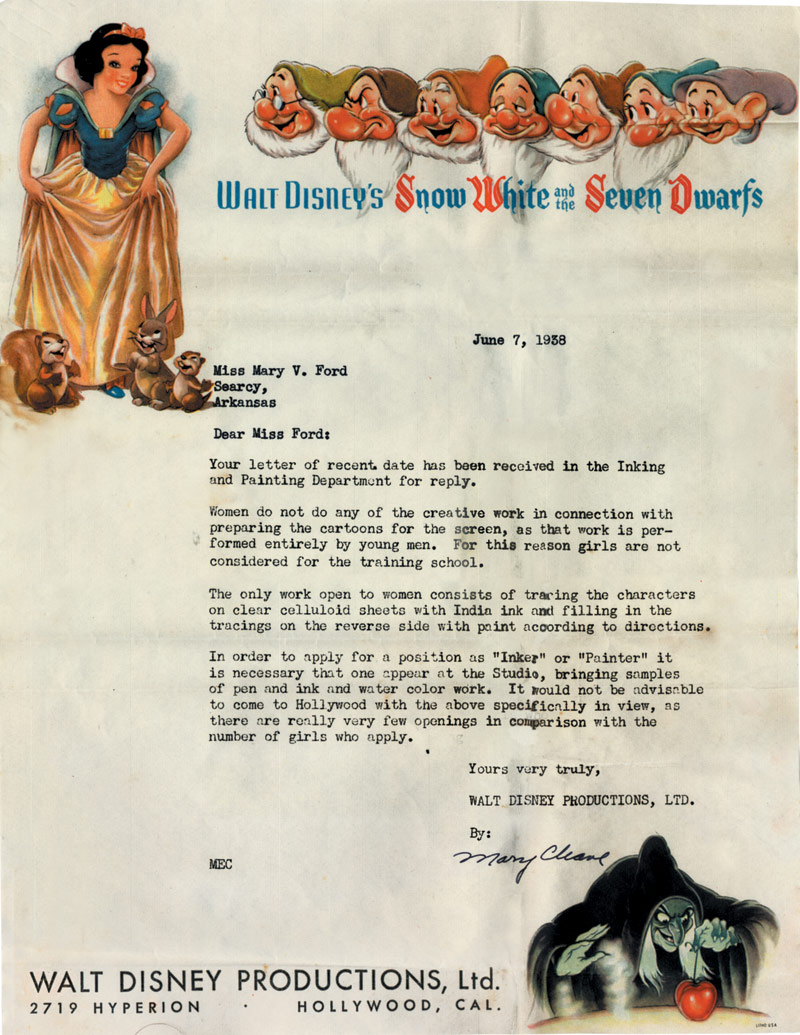Found via Digg. Though I can’t vouch for the authenticity of the letter (found here), it is rather interesting.
Text:
Miss Mary T. Ford
Searcy,
ArkansasDear Miss Ford,
Your letter of recent date has been received in the Inking and Painting Department for reply.
Women do not do any of the creative work in connection with preparing the cartoons for the screen, as that work is performed entirely by young men. For this reason girls are not considered for the training school.
The only work open to women consists of tracing the characters on clear celluloid sheets with India ink and filling in the tracings on the reverse side with paint according to the directions.
In order to apply for a position as “Inker” or “Painter” it is necessary that one appear at the Studio, bringing samples of pen and ink and water color work. It would not be advisable to come to Hollywood with the above specifically in view, as there are really very few openings in comparison with the number of girls who apply.
Yours very truly,
WALT DISNEY PRODUCTIONS, LTD.


























